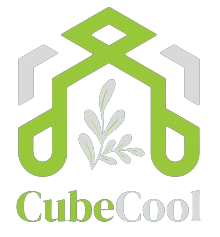Diversity has changed how companies market and develop products. It helps deliver tailored offerings that connect with their audience. Understanding this is key for businesses to thrive.
Table of Contents
ToggleExploring product customization shows the need to consider diverse audience needs. Embracing diversity marketing leads to products that meet specific demographics. This boosts customer satisfaction and loyalty.
This guide will deepen your understanding of diversity’s role in product development and marketing. It helps create products that resonate with your target audience. By focusing on diversity marketing and customization, you can outdo competitors and build a loyal customer base.
Key Takeaways
- Understanding diversity marketing is crucial for businesses to succeed in today’s market.
- Product customization is key to catering to diverse audience needs and preferences.
- Diversity-driven marketing can lead to increased customer satisfaction and loyalty.
- Considering diverse demographics is essential for product development and marketing.
- Embracing diversity marketing can help businesses stay ahead of the competition.
- How has diversity impacted the marketing and customization of products is a critical question for businesses to answer.
- By focusing on diversity marketing and product customization, businesses can build a loyal customer base.
Understanding the Evolution of Diversity in Marketing
As you explore marketing, you’ll see a big change from mass marketing to targeting diverse groups. This change comes from realizing how important it is to market to a wide range of consumers. Inclusion marketing is key, helping companies connect with their audience in meaningful ways.
The path to diverse marketing has seen important steps. These include launching targeted ads, creating products that fit different cultures, and showing diverse faces in marketing. These actions have made marketing more inclusive, helping businesses reach and connect with their varied customers.
The Shift from Mass Marketing to Diverse Targeting
The move to diverse marketing is because of a more varied consumer market. As the people businesses aim to sell to change, marketing strategies must too. By using multicultural and inclusion marketing, companies can meet the unique needs of their diverse customers, leading to growth.

Key Milestones in Multicultural Marketing
- Introduction of targeted advertising campaigns
- Development of culturally sensitive product lines
- Incorporation of diverse representation in marketing materials
Understanding the evolution of diversity in marketing helps you navigate the complex world of multicultural marketing. It’s not just a trend; it’s essential for success in today’s diverse market.
The Business Case for Diversity-Driven Marketing
When planning your marketing strategy, remember the value of diversity. Diversity marketing can expand your audience, boost brand loyalty, and grow your business. It makes your marketing more inclusive and effective by embracing cultural diversity impact.
Market segmentation is a key part of diversity-driven marketing. It divides your audience into groups based on their unique needs and preferences. This way, you can tailor your marketing to each group, making it more likely to convert and build loyalty.
Some benefits of diversity-driven marketing include:
- Increased brand awareness and reputation
- Improved customer engagement and loyalty
- Enhanced creativity and innovation in marketing efforts
- Better representation of diverse customer groups

By adopting diversity-driven marketing, you can lead the competition. Your brand will be seen as inclusive and culturally sensitive. Remember, diversity marketing is crucial for success in today’s diverse market.
| Marketing Strategy | Benefits |
|---|---|
| Diversity-Driven Marketing | Increased brand awareness, improved customer engagement, enhanced creativity |
| Market Segmentation | Targeted marketing efforts, increased conversion rates, better customer loyalty |
| Cultural Diversity Impact | Increased cultural sensitivity, improved brand reputation, enhanced customer trust |
How Has Diversity Impacted the Marketing and Customization of Products
Understanding how diversity affects product marketing and customization is key. Different cultures and demographics shape what consumers want. Today, companies aim to make personalized products for a wide range of people.
It’s important for companies to know how culture affects product choices. For example, demographic-specific product modifications help tailor products for certain groups. This way, companies can make products that really speak to their audience.
Cultural Influence on Product Preferences
- Cultural values and norms shape consumer behavior and purchasing decisions.
- Companies must consider cultural differences when developing marketing campaigns and product customization strategies.
- Understanding cultural influences can help companies create personalized products that meet the unique needs of diverse consumer groups.

Demographic-Specific Product Modifications
Companies can use demographic data to make products that fit specific groups. This approach boosts customer happiness, loyalty, and sales. The shift towards personalized products shows how diversity is changing marketing and customization.
| Demographic | Product Modification |
|---|---|
| Age | Senior-friendly packaging, youth-oriented product design |
| Ethnicity | Culturally sensitive product branding, language support |
| Geographic location | Region-specific product features, climate-sensitive packaging |
Identifying and Analyzing Diverse Market Segments
To reach different consumer groups, understanding market segments and cultural diversity is key. You must spot and study various groups in your audience. Each group has its own likes, needs, and traits. This way, you can craft marketing plans that speak to each group, boosting your business and making customers happy.
There are many ways to research cultural markets, demographics, and psychographics. For example, you can use surveys, focus groups, or interviews to learn about different cultures. Also, looking at data like age, income, and education can show you trends in certain groups.
Cultural Market Research Methods
- Surveys and focus groups to gather qualitative data
- Demographic analysis to identify trends and patterns
- Psychographic profiling to understand values and attitudes
Using these methods helps you understand how culture affects your audience. This knowledge lets you create marketing plans that meet each group’s needs. Such targeted campaigns can increase engagement, sales, and customer loyalty.

Developing Culturally-Sensitive Product Strategies
Understanding your target audience’s cultural nuances is key in diversity marketing. You must consider how cultural differences affect consumer behavior and preferences. Product customization is vital here, allowing you to tailor products for diverse consumer bases.
To craft culturally-sensitive product strategies, start with market research. This can involve focus groups, surveys, and social media listening. Knowing your audience’s cultural context helps you create products that resonate and grow your business.
Some important factors to consider include:
- Language and translation
- Cultural symbolism and imagery
- Product features and functionality
- Marketing messaging and tone
By embracing diversity marketing and product customization, you can meet the demand for culturally-sensitive products. This approach helps you connect with your audience, stand out from competitors, and drive growth.
Creating culturally-sensitive product strategies is an ongoing task. You must stay updated with cultural changes to keep your products relevant and appealing to diverse consumers.
| Cultural Consideration | Product Strategy |
|---|---|
| Language and translation | Offer products with multilingual packaging and instructions |
| Cultural symbolism and imagery | Use culturally-sensitive imagery and symbolism in marketing materials |
| Product features and functionality | Design products with features that cater to diverse cultural needs |
Implementing Inclusive Marketing Campaigns
To reach a wide range of consumers, you must create inclusive marketing campaigns. These campaigns should appeal to various demographics and cultures. Inclusion marketing aims to make your audience feel valued and understood.
Visuals play a key role in inclusion marketing. Images and videos should show the diversity of your audience. Use models from different backgrounds and avoid stereotypes. Also, consider language and translation to reach everyone effectively.
Channel Selection for Different Demographics
Choosing the right channels is crucial for reaching your audience. Here are some options:
- Social media platforms, such as Facebook, Twitter, and Instagram
- Cultural events and festivals
- Language-specific media outlets
By picking the right channels, you can connect with your audience effectively.
Creating inclusive marketing campaigns needs a deep understanding of your audience. This approach helps you make campaigns that resonate and drive results.
Customization Technologies and Tools for Diverse Markets
Exploring product customization and multicultural marketing opens up new technologies and tools. These help companies tailor products and messages for different consumers. They are key to growing businesses and staying ahead in a fast-changing market.
Data analytics and artificial intelligence are important in product customization. They help companies understand what customers want. For example, Nike and Adidas use them to offer custom shoes and advice.
In multicultural marketing, tools like language translation software and cultural insights platforms are used. They help companies reach out to different cultural groups. Coca-Cola’s “Share a Coke” campaign is a great example of this.
Using these technologies and tools can lead to successful strategies. Whether it’s through data or culturally aware campaigns, being true and relevant is key. As you explore product customization and multicultural marketing, the right tools can help you connect with your audience.
Measuring Success in Diversity Marketing
To see how well your diversity marketing works, you need to watch certain key numbers. Look at website visits, social media activity, and how many people buy from you. These numbers help you improve your marketing and grow your business.
Knowing who you’re marketing to is key in diversity marketing. By focusing on specific groups, you can make ads that really speak to them. This way, you can see what’s working and what needs tweaking. Important numbers to keep an eye on include:
- Customer acquisition costs
- Customer retention rates
- Revenue growth from diverse market segments
By checking these numbers and listening to what customers say, you can make your marketing better. This helps you serve your audience better and succeed in the long run.
Success in diversity marketing is all about using data wisely. It’s about understanding the unique needs of different groups. By doing this, you can create marketing that truly connects with your audience and helps your business grow.
| Metric | Description |
|---|---|
| Customer Acquisition Cost | The cost of acquiring a new customer |
| Customer Retention Rate | The percentage of customers retained over a given period |
| Revenue Growth | The increase in revenue from diverse market segments |
Overcoming Common Challenges in Diversity Marketing
Starting your diversity marketing journey comes with its own set of challenges. You’ll face issues like cultural appropriation, budgeting, and training your team. It’s key to be culturally sensitive and use strategies for inclusion marketing to overcome these hurdles.
Some common challenges in diversity marketing include:
- Cultural appropriation risks: Be mindful of the fine line between appreciation and appropriation. Ensure that your marketing efforts respect and acknowledge the cultural heritage of your target audience.
- Budget allocation strategies: Allocate your budget effectively to reach diverse market segments. Consider partnering with influencers or organizations that cater to specific demographics.
- Team training requirements: Educate your team on the importance of diversity marketing and inclusion marketing. Provide them with the necessary tools and training to create culturally sensitive content.
By acknowledging and addressing these challenges, you can create effective diversity marketing campaigns that resonate with your target audience. Remember to prioritize cultural sensitivity and inclusion in your marketing efforts, and you’ll be well on your way to success in diversity marketing and inclusion marketing.
Ultimately, overcoming common challenges in diversity marketing requires a deep understanding of your target audience and a willingness to adapt to their needs. By doing so, you can create marketing campaigns that not only resonate with diverse market segments but also drive business results.
| Challenge | Solution |
|---|---|
| Cultural appropriation risks | Conduct thorough cultural research and consult with experts |
| Budget allocation strategies | Allocate budget based on target audience demographics and preferences |
| Team training requirements | Provide regular training and workshops on diversity marketing and inclusion marketing |
Conclusion: Building a Future-Proof Diverse Marketing Strategy
Diversity has greatly changed how we market and customize products. By using different viewpoints and reaching out to various groups, companies can make their offerings more inclusive. The next step is to create a diversity marketing strategy that keeps up with changing customer needs.
To create a strong diverse marketing plan, start by really getting to know your audience. Do deep research on their culture and demographics to find out what they like and need. Use advanced analytics and customer feedback to keep improving your strategies.
Make sure your marketing is culturally sensitive and real. Show diverse groups in your ads and messages in a respectful way. Also, train your team to handle diversity well.
As you start your diversity efforts, watch your progress closely and see how much you’re getting back. This will help you make your marketing even better and show how being inclusive is good for business.
By making diversity a key part of your marketing, you can open up new ways to grow, innovate, and keep customers loyal. Start this journey to make a brand that truly connects with today’s diverse world.
FAQ
How has diversity impacted the marketing and customization of products?
Diversity has changed how companies market and customize products. They now think about cultural differences and what different people want. This has led to marketing that speaks to many people, products made for specific groups, and messages that reach everyone.
What is the business case for diversity-driven marketing?
Marketing with diversity is good for business. It lets you reach more people, build loyalty, and grow. By knowing what different groups want, you can make products and ads that really connect. This can lead to more sales and happy customers.
How can companies identify and analyze diverse market segments?
It’s important to know your diverse market segments. Companies use research and analysis to understand different groups. This helps them make ads and products that speak to each group, leading to better sales.
What are the key considerations for developing culturally-sensitive product strategies?
Creating products that fit different cultures is key. Companies must think about how things look, work, and mean to different people. By using cultural insights, they can make products that people love, helping the business grow.
How can companies implement inclusive marketing campaigns?
Inclusive marketing means showing everyone in your ads and using the right words. It’s about making sure your ads look like the world we live in. This builds trust and loyalty with all your customers.
What are some of the common challenges in diversity marketing, and how can they be overcome?
Challenges in diversity marketing include avoiding cultural mistakes, using your budget wisely, and training your team. To beat these, focus on being culturally aware, use your resources well, and train your team. This way, you can make marketing that works for everyone.
